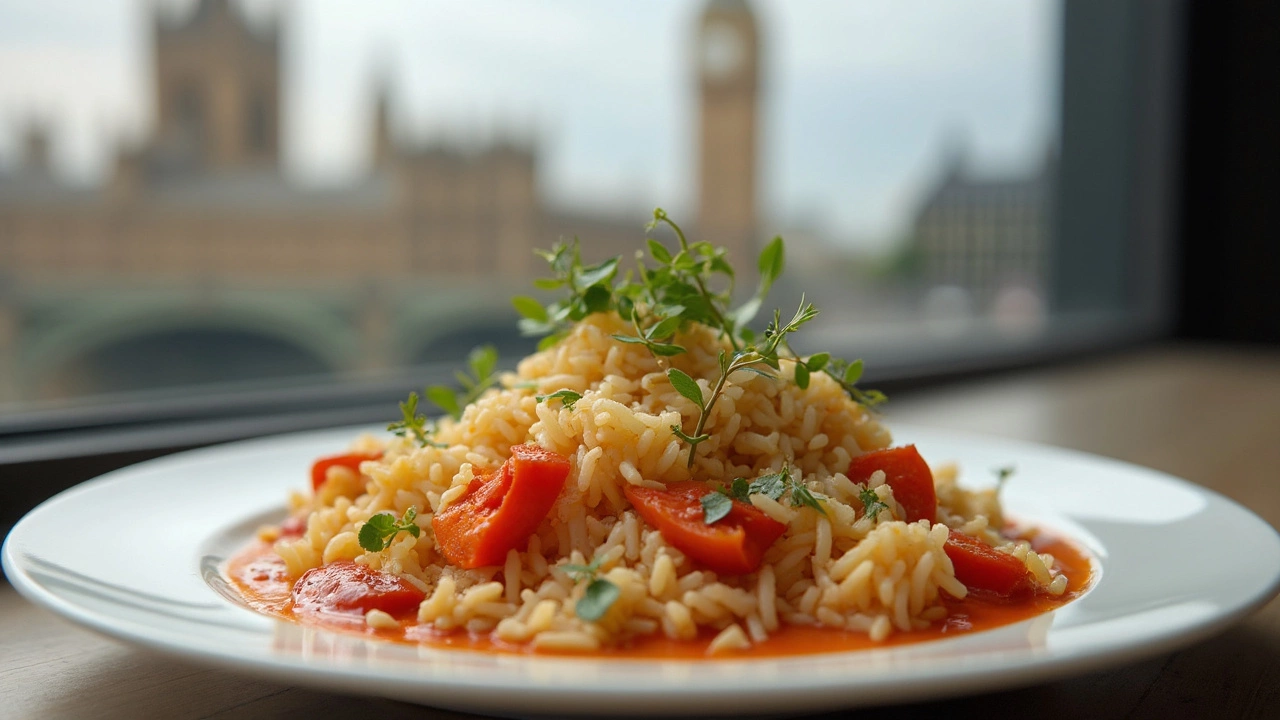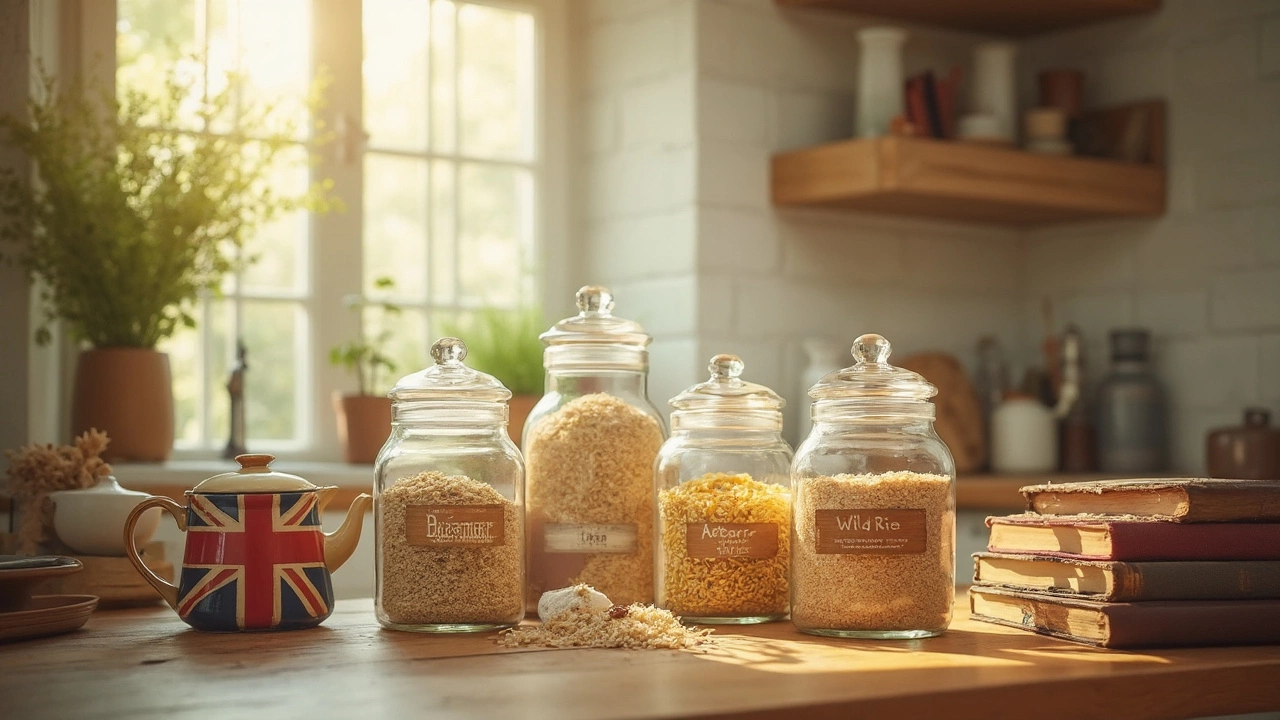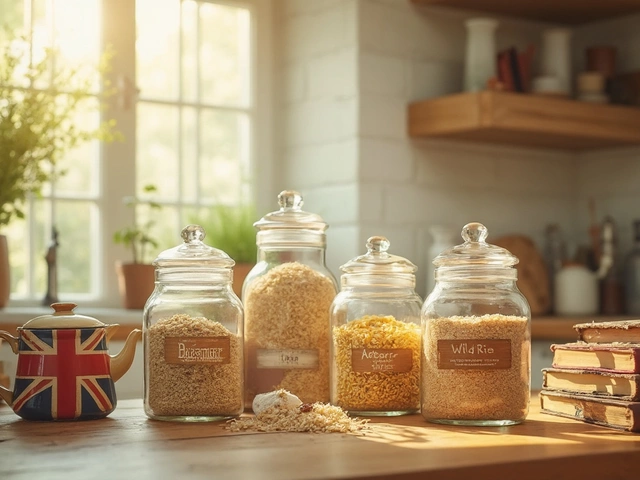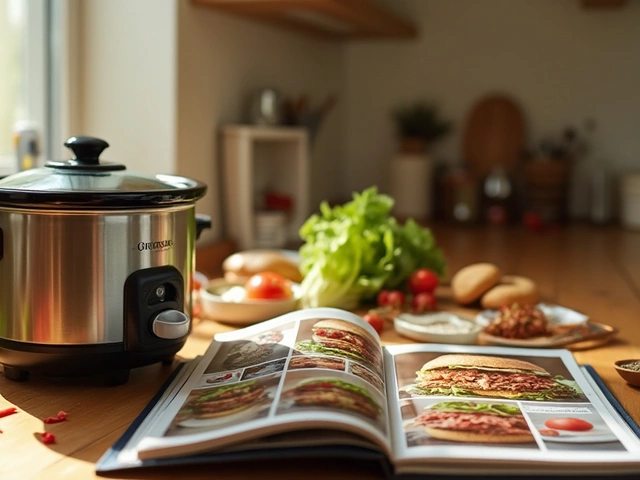So, you're curious if rice has gluten in it? The simple answer is no, rice is naturally gluten-free. That makes it a go-to grain for anyone avoiding gluten. Whether you're munching on white, brown, or wild rice, you can safely enjoy it without worrying about sneaky gluten.
But here's the catch: while the rice itself doesn't contain gluten, it's easy to run into cross-contamination. This can happen if rice is processed in facilities that handle gluten grains like wheat, barley, or rye. So, what’s the play? Look for rice labeled 'certified gluten-free' to be extra safe, especially if you're celiac or very sensitive to gluten.
You'll find there are all sorts of rice out there—over 40,000 types, to be precise! Each one has its own unique taste and texture, which can make your dishes more exciting. Jasmine rice can bring a touch of sweetness, while basmati has that distinctive, nutty flavor.
- The Gluten-Free Nature of Rice
- Avoiding Cross-Contamination
- Different Types of Rice
- Gluten-Free Recipe Ideas
- Fun Facts About Rice
The Gluten-Free Nature of Rice
When it comes to eating gluten-free, rice is like hitting the food jackpot. It’s naturally gluten-free, which means it doesn’t contain any gluten, the pesky protein found in wheat, barley, and rye. This makes it ideal for anyone switching to a gluten-free lifestyle.
But why is rice such a safe bet? It's all about its biological makeup. Rice belongs to a different family of grains, and it's one of the few grains that people with gluten sensitivities or celiac disease can enjoy without worries. You’ve got white rice, brown rice, and even wild rice at your disposal. Each has its vibe and use in countless recipes.
Types and Benefits of Rice
Let’s break it down a bit. White rice is your classic, everyday option. It's polished and has had the bran and germ removed. Brown rice, on the other hand, is less processed and maintains a higher nutritional value due to the bran layer. Wild rice isn't technically rice but rather the seed of aquatic grass, yet it still stays gluten-free!
Getting Gluten-Free Right
The trick isn't really about whether rice has gluten but ensuring it's stored and cooked correctly. If you buy rice in bulk from bins, double-check there's no cross-contamination. Sometimes, those bins can also hold gluten-containing grains.
| Type of Rice | Gluten-Free |
|---|---|
| White Rice | Yes |
| Brown Rice | Yes |
| Wild Rice | Yes |
In the global market, the demand keeps climbing for gluten-free foods, and rice fits right in without needing any adjustments. It’s versatile, nutritious, and fits into any diet plan, proving why it's loved by millions worldwide.
Avoiding Cross-Contamination
While rice is naturally gluten-free, cross-contamination is a bit of a sneaky issue. It occurs when gluten from other foods or kitchen environments gets mixed in with your gluten-free rice. This is a concern for anyone with celiac disease or strong gluten intolerance.
Where Cross-Contamination Happens
Cross-contamination can happen in places you might not expect. For example, at the processing plant, if rice shares equipment with gluten-containing grains. Or, in your kitchen, if the same pot or spoon used for regular pasta finds its way into your rice cooking.
Simple Tips to Avoid It
- Buy Trusted Brands: Choose rice brands that clearly state 'certified gluten-free' on the label. This means they've been tested and are below the acceptable threshold for gluten.
- Separate Kitchenware: Keep a separate set of utensils for your gluten-free cooking. This way, there's no cross-sharing with gluten-heavy foods.
- Clean Thoroughly: Clean your cooking surfaces and equipment before cooking gluten-free meals. A quick wash can reduce a lot of risks.
- Be Wary at Restaurants: If you're dining out, ask your server if they have dedicated equipment for cooking gluten-free foods, including rice.
Here's a quick look into how often cross-contamination occurs in some households:
| Risk Factor | Occurrence (%) |
|---|---|
| Shared Equipment | 35% |
| Improper Cleaning | 20% |
| Restaurant Error | 25% |
The Bottom Line
By taking a few precautions, you can enjoy rice without gluten worries. Just a bit of extra care can ensure your rice dish stays gluten-free and safe every time you cook.

Different Types of Rice
Rice is a true powerhouse grain with so much variety that your meals will never get boring. Whether you're on a gluten-free diet or just want to spice up your cooking, knowing the different types of rice helps.
White Rice
This is the most common type of rice you’ll find. It's been processed to remove the husk, bran, and germ, so it cooks faster. White rice is the star of dishes like risotto and sushi. It's also a firm favorite when you need something quick and easy to whip up on busy weeknights.
Brown Rice
Want a gluten-free option that's a bit heartier? Brown rice it is! It keeps its bran layer, so it's got more fiber and nutrients. It takes a little longer to cook, but it's worth it for that nutty flavor. Plus, it's perfect in stir-fries or as a base for grain bowls.
Basmati Rice
Basmati is known for its fragrant aroma and fluffy texture. It’s a staple in Indian and Middle Eastern cuisine. This long-grain rice is perfect for pilafs and pairs well with curries. It’s automatically gluten-free, and a cupful of it can transport your dinner plate to another continent.
Jasmine Rice
This rice type is like a cousin to basmati but has a slightly different aroma and texture. It gets its name from the Jasmine flower and has a subtly sweet and floral scent. Jasmine rice is great for Thai dishes, and its soft, slightly sticky texture makes it perfect for spicy, saucy meals.
Wild Rice
Despite its name, wild rice isn’t technically a type of rice, but who’s complaining? This delicious grain is cherished for its unique, chewy texture and rustic flavor. It's a fantastic addition to salads or as a stuffing for poultry. High in protein and fiber, wild rice is a nutritious option to keep in your gluten-free pantry.
| Type of Rice | Cooking Time | Best Used For |
|---|---|---|
| White Rice | 15-20 mins | Quick meals |
| Brown Rice | 40-45 mins | Healthy bowls |
| Basmati Rice | 15-20 mins | Pilafs and curries |
| Jasmine Rice | 15-18 mins | Thai dishes |
| Wild Rice | 45-50 mins | Salads and stuffing |
Exploring different types of gluten-free rice can bring vibrant flavors and textures to your kitchen. There’s no shortage of ways to enjoy rice, and each type gels well with different tastes and cuisines. So go on, mix it up and find your favorite!
Gluten-Free Recipe Ideas
Let's talk about some tasty gluten-free recipes you can whip up with rice. Whether you're in the mood for a quick snack or a hearty meal, rice has your back and is totally gluten-free.
1. Rice and Veggie Stir-Fry
Looking for an easy weeknight dinner? A rice and veggie stir-fry is your best friend. Start with some cooked brown rice, toss it in a wok with your favorite veggies like bell peppers and broccoli, add a splash of soy sauce—make sure it's gluten-free—and you're all set!
2. Mediterranean Rice Salad
This one's perfect for a light lunch. Use cooked jasmine rice as the base, then throw in some chopped cucumbers, olives, cherry tomatoes, and feta. Drizzle with olive oil and lemon juice. It's fresh, simple, and gluten-free!
3. Classic Rice Pudding
Craving something sweet? Prepare classic rice pudding using milk, sugar, and vanilla extract. It's a comforting dish that'll remind you of granny's kitchen. Just be sure to use ingredients that are free from any trace of gluten.
4. Stuffed Bell Peppers with Rice
For something more filling, try stuffing bell peppers with a mix of cooked wild rice, black beans, corn, and spices. Bake them until the peppers are tender, and you've got a colorful dish that's not only delicious but also gluten-free.
5. Sushi Roll Bowl
Don't want to mess around with rolling sushi? Go for a deconstructed version! Layer sushi rice in a bowl with your go-to sushi ingredients—think avocado, cucumber, and crab meat—and sprinkle some sesame seeds on top. It's an easy, fun way to satisfy your sushi cravings without the gluten.
Rice is versatile, gluten-free, and a beloved staple around the world. With these recipes, you'll find yourself cooking up creative dishes that are both tasty and safe for your gluten-free diet!

Fun Facts About Rice
Rice is one of those things that's everywhere, but how much do we really know about it? It's been around for a whopping 8,000 years! Talk about a history of feeding hungry folks across the globe. Here's a closer look at some interesting titbits you might not know.
Global Love for Rice
Did you know that rice is a staple food for over half of the world's population? That's right! From Asia to Africa, it's a major part of the daily diet. It's so integral in Asia that it's often synonymous with meals themselves. Now that's a level of love for rice that's hard to beat.
Endless Varieties
There are more than 40,000 varieties of rice out there. Imagine trying a new one every day! While jasmine, basmati, and arborio are quite popular, each type brings something unique to the table. Whether you're whipping up some sushi, a comforting risotto, or a spicy biryani, there's a rice out there that's perfect for your dish.
Rice and the Environment
Rice is grown in every continent except Antarctica (poor penguins!). It needs a lot of water, which is why you'll often see it in flooded fields known as paddies. Despite this thirst, it's a crop that's managed to adapt well to climate changes over millennia, and is still fundamentally important to food security worldwide.
Hidden Nutrients
While white rice might get a bad rap for being the 'less healthy' choice compared to brown rice, it's often enriched with iron and other nutrients, making it a good energy source. Plus, since it's gluten-free, it's a great option for folks avoiding gluten. So next time you dig into a steaming bowl of rice, know that there's more to this humble grain than meets the eye.









Write a comment